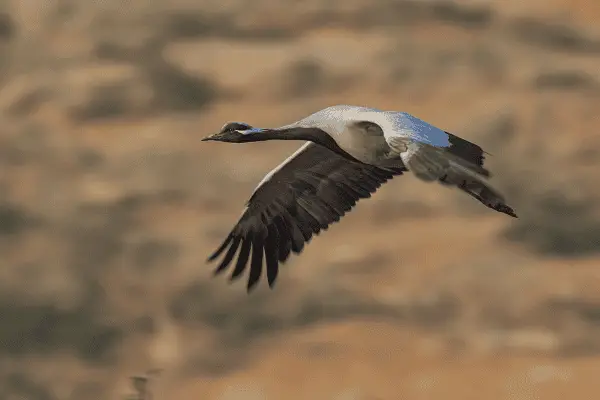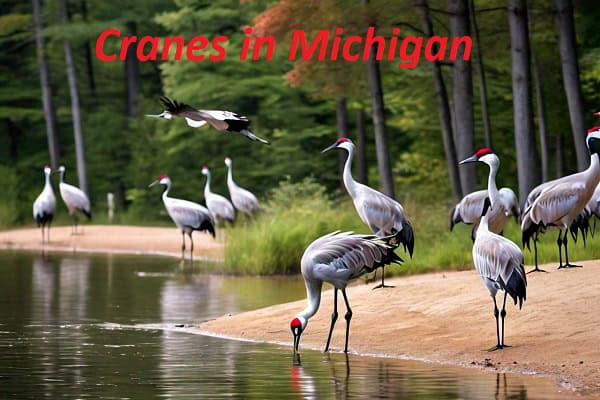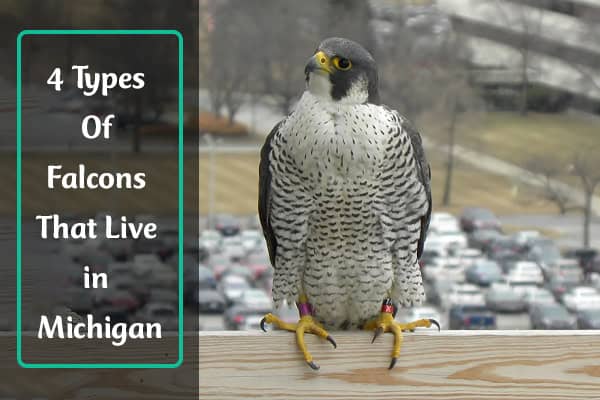Discover 4 Types of Cranes in Michigan (With Photos)
Welcome to the fascinating world of cranes in Michigan! In this article, we will take you on a journey to explore the diverse crane species that call Michigan home. From the majestic Sandhill cranes to the endangered Whooping cranes, we will provide you with an ID guide and stunning photos of these magnificent birds. Whether you’re an avid birdwatcher or simply curious about Michigan’s wildlife, this article is sure to captivate your imagination.
Importance of Cranes in Michigan’s Ecosystem
Cranes are not merely graceful and beautiful birds; they also play a vital role in maintaining Michigan’s delicate ecosystem. Their presence and activities contribute significantly to the health and balance of the state’s natural environment.
Maintaining Wetlands and Prairie Habitats
Cranes are particularly essential in preserving and restoring wetlands and prairie habitats in Michigan. By foraging in these areas, they help control vegetation growth and prevent the dominance of invasive species. Their feeding habits ensure a diverse plant community, creating a favorable environment for other wildlife.
Contribution to Seed Dispersal
The ecological role of cranes extends beyond their impact on vegetation. As they move between different habitats, cranes inadvertently aid in seed dispersal. Seeds attached to their feathers and legs can be transported to new areas, facilitating plant growth and promoting biodiversity.
Controlling Insect Populations
Cranes also make a significant contribution to controlling insect populations in Michigan. They feed on a variety of small invertebrates, including insects and other arthropods. By consuming these creatures, cranes help regulate their numbers and maintain a balance in the ecosystem.
The ecological significance of cranes cannot be overstated. Their presence is a visible symbol of a healthy and thriving ecosystem. When we conserve and protect their habitats, we ensure the long-term health of not only cranes but also other bird species and the diverse array of wildlife that depend on these habitats.
1. Sandhill Cranes: Michigan’s Iconic Bird
Sandhill cranes are a common sight in Michigan, known for their distinctive calls and graceful appearance. These majestic birds are an iconic symbol of Michigan’s wildlife and hold a special place in the hearts of nature enthusiasts.
When it comes to crane behavior, Sandhill cranes exhibit fascinating traits that contribute to their survival and success. From their intricate courtship dances to their communal roosting habits, observing their behavior is a captivating experience.

Nesting habits play a crucial role in the life cycle of Sandhill cranes. They build their nests in marshy areas, constructing large mounds of vegetation called “platforms.” These platforms provide a stable foundation for their eggs and protect them from predators. Sandhill cranes are devoted parents, sharing the responsibility of incubating the eggs and caring for the chicks.
Migration is a remarkable aspect of Sandhill crane biology. As the seasons change, these birds embark on long journeys, covering thousands of miles between their breeding grounds in Michigan and their wintering grounds in warmer climates. Their annual migration showcases their incredible stamina and adaptability.
2. Whooping Cranes: Endangered Majesty
Whooping cranes are a rare and endangered species that occasionally visit Michigan. These magnificent birds are known for their majestic appearance and distinctive calls, captivating birdwatchers and nature enthusiasts alike.
As one of Michigan’s rare birds, the conservation status of whooping cranes is of utmost importance. Efforts are being made to protect their habitats and promote breeding programs, aiming to increase their population and prevent their extinction. Conservation organizations work tirelessly to monitor and track the movements of these endangered cranes, ensuring their safety throughout their migratory journeys.

In recent years, sightings of whooping cranes in Michigan have brought hope to conservationists and bird lovers. However, their status as an endangered species highlights the need for ongoing protection. By understanding the challenges faced by whooping cranes and their ecological significance, we can raise awareness and contribute to their conservation efforts.
Distinctive features and behavior make it possible to distinguish whooping cranes from other crane species. Their unique call, characteristic white plumage, and tall stature set them apart, making them a true symbol of Michigan’s rare birds. By learning to identify these magnificent creatures, you can appreciate their beauty and play a part in preserving their natural habitats.
Conservation Efforts for Whooping Cranes
The survival of whooping cranes heavily relies on various conservation initiatives and collaborative efforts. Organizations such as the International Crane Foundation (ICF) and the U.S. Fish and Wildlife Service (USFWS) play a vital role in safeguarding these endangered birds.
“Our goal is to protect and restore whooping crane populations, ensuring they have adequate habitats for their breeding, migration, and wintering needs,” says Dr. Jane Goodall, renowned primatologist and conservationist.
Breeding programs are an essential aspect of conservation efforts for whooping cranes. Organizations like Operation Migration lead the way in reintroducing captive-bred cranes into their natural habitats, giving them a chance to thrive and contribute to the growth of the population.
Through continued research, monitoring, and public outreach, the ongoing conservation efforts aim to secure the future of these rare and endangered whooping cranes, ensuring their presence in Michigan’s diverse ecosystem for generations to come.
| Conservation Efforts | Impact |
|---|---|
| Wetland preservation and restoration | Provides suitable habitats for whooping cranes and other wildlife |
| Community engagement and education programs | Raises awareness and promotes conservation practices |
| Collaboration with government agencies | Strengthens protection measures and policy implementation |
Lesser-Known Crane Species in Michigan
While the Sandhill and Whooping cranes dominate the spotlight, Michigan is also home to lesser-known crane species. These rare crane species contribute to the rich diversity of Michigan’s avian population. Let’s dive into the characteristics of the common crane and the demoiselle crane and explore where they can be found within the state.
3. Common Crane
The common crane (Grus grus) is a majestic bird with a striking appearance. With a height of up to 4 feet and a wingspan of around 7 feet, it is slightly smaller than the Sandhill crane. The common crane’s plumage is predominantly gray, with black wingtips and a red crown on its head.

Unlike the Sandhill crane, which is native to North America, the common crane is a European species. However, it occasionally visits Michigan during migration, making it an exciting sighting for birdwatchers. Look for the common crane in wetlands, agricultural fields, and open grasslands.
4. Demoiselle Crane
The demoiselle crane (Anthropoides virgo) is a small and elegant crane species. It stands at an average height of around 3 feet and has a wingspan of approximately 5 feet. The demoiselle crane’s plumage is predominantly gray, with a white throat and a black crown on its head.

Native to Central Asia, the demoiselle crane embarks on impressive long-distance migrations. Occasionally, it can be seen in Michigan during its annual journeys. Look for the demoiselle crane in marshes, wet meadows, and cultivated fields.
Discovering the common crane and the demoiselle crane adds to the thrill of exploring Michigan’s crane diversity. Take the opportunity to observe these rare and captivating crane species as they grace the skies of Michigan. The stunning photographs below provide a glimpse into the beauty of these lesser-known cranes.
Conclusion:
In the end, Going on a birdwatching trip in Michigan is super cool because you get to see lots of different types of cranes, like the Sandhill cranes and the super rare Whooping cranes. Michigan is the perfect home for these birds, and that’s why so many people come from far away to see them. Watching these cranes helps you feel more connected to nature and understand why it’s important to take care of them. And when we tell others about our experiences and stand up for their protection, we’re helping to make sure Michigan’s cranes stick around for a long time.
Frequently Asked Questions
Q1. What kind of crane lives in Michigan?
Sandhill cranes and Whooping cranes are two common types of cranes found in Michigan.
Q2. What is the largest crane in Michigan?
The Sandhill crane is the largest crane species found in Michigan.
Q3. Does Michigan have white cranes?
Yes, Michigan is home to the majestic Whooping crane, which is known for its white plumage.
Q4. Are whooping cranes in Michigan?
Yes, Whooping cranes can be found in Michigan, particularly in wetland areas during certain times of the year.







